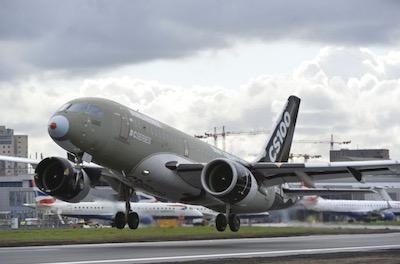Tue, Jan 03, 2023
AD 2022-26-06 Prompted By Reports Of Flight Control (Horizontal Stab, Rudder, And Elevator) Decals Degrading And Peeling
The FAA is adopting a new airworthiness directive (AD) for certain Airbus Canada Limited Partnership Model BD-500-1A10 and BD-500-1A11 airplanes.

This AD was prompted by reports of flight control (horizontal stabilizer, rudder, and elevator) decals degrading and peeling (damage), reports of operators painting over these decals, and reports that procedures to replace these decals were inaccurate, potentially causing incorrect positioning of replacement decals. This AD requires inspecting the left and right horizontal stabilizer decals for visibility and damage; and for certain airplanes, inspecting the rudder and left and right elevator decals for visibility and damage; and doing applicable corrective actions; as specified in a Transport Canada AD, which is incorporated by reference. The FAA is issuing this AD to address the unsafe condition on these products. This AD is effective February 2, 2023.
Supplementary Information: The FAA issued a notice of proposed rulemaking (NPRM) to amend 14 CFR part 39 by adding an AD that would apply to certain Airbus Canada Limited Partnership Model BD-500-1A10 and BD-500-1A11 airplanes. The NPRM published in the Federal Register on July 29, 2022 (87 FR 45709). The NPRM was prompted by AD CF-2022-01, dated January 7, 2022, issued by Transport Canada, which is the aviation authority for Canada (referred to after this as the MCAI).

The MCAI states that flight control decals have been degrading and peeling, operators have been painting over these decals, and procedures to replace these decals were inaccurate, potentially causing incorrect positioning of replacement decals. An investigation determined that the degradation and peeling of the flight control decals were caused by an incorrect clear protective coating being applied during production, and that flight control decals were being painted over because of unclear in-service procedures. The in-service procedures were revised to clearly state that the flight control decals are to be masked prior to painting, and to ensure the flight control decals are properly placed. Flight control decals that are damaged or incorrectly positioned could introduce rigging offset of flight control surfaces, which, when combined with other failures or severe maneuvers, could result in loss of flight control surface effectiveness or structural loading that exceeds the airframe's capability. See
the MCAI for additional background information.
In the NPRM, the FAA proposed to require inspecting the left and right horizontal stabilizer decals for visibility and damage; inspecting the rudder and left and right elevator decals for visibility and damage for certain airplanes; and doing applicable corrective actions.
You may examine the MCAI in the AD docket at regulations.gov under Docket No. FAA-2022-0981.
More News
He Attempted To Restart The Engine Three Times. On The Third Restart Attempt, He Noticed That Flames Were Coming Out From The Right Wing Near The Fuel Cap Analysis: The pilot repor>[...]
Make Sure You NEVER Miss A New Story From Aero-News Network Do you ever feel like you never see posts from a certain person or page on Facebook or Instagram? Here’s how you c>[...]
From 2009 (YouTube Edition): Leading Air Show Performers Give Their Best Advice for Newcomers On December 6th through December 9th, the Paris Las Vegas Hotel hosted over 1,500 air >[...]
Aero Linx: NASA ASRS ASRS captures confidential reports, analyzes the resulting aviation safety data, and disseminates vital information to the aviation community. The ASRS is an i>[...]
“For our inaugural Pylon Racing Seminar in Roswell, we were thrilled to certify 60 pilots across our six closed-course pylon race classes. Not only did this year’s PRS >[...]
 NTSB Final Report: Rutan Long-EZ
NTSB Final Report: Rutan Long-EZ ANN FAQ: Turn On Post Notifications
ANN FAQ: Turn On Post Notifications Classic Aero-TV: ICAS Perspectives - Advice for New Air Show Performers
Classic Aero-TV: ICAS Perspectives - Advice for New Air Show Performers ANN's Daily Aero-Linx (06.28.25)
ANN's Daily Aero-Linx (06.28.25) Aero-News: Quote of the Day (06.28.25)
Aero-News: Quote of the Day (06.28.25)




